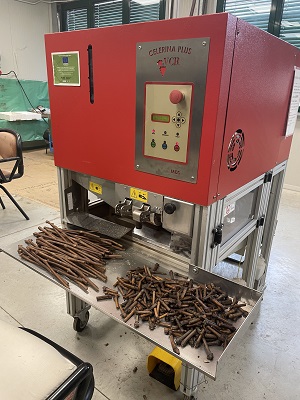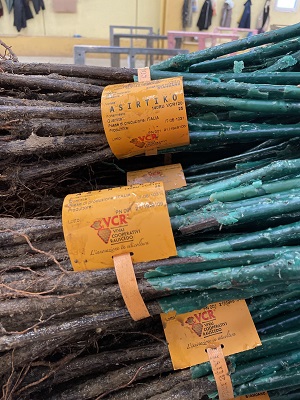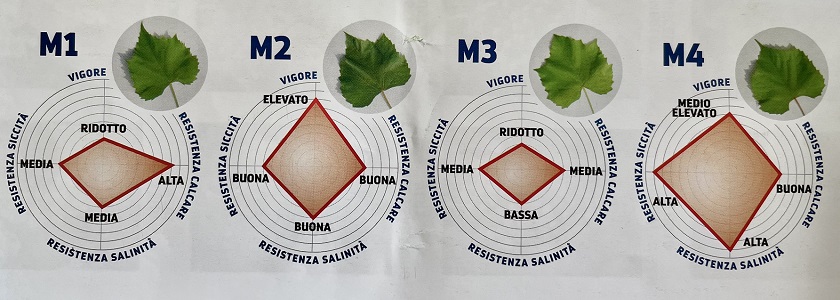VCR: the taste of roots
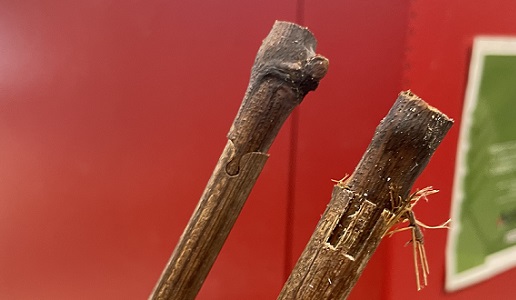
Thanks to a visit to Rauscedo Cooperative Nurseries, Baratella was able to taste wines made by the same clone on different rootstocks. An unusual experience, definitely interesting.
I experienced the taste of roots. I will never look at wine with the same eyes again.
If roots have a taste and what it is, it is the unwritten page of enology. Although grafting has literally saved viticulture from the advent of phylloxera and the continuous experimentation and research has surely led to the most convenient solutions for everyone, asking oneself whether root system influences or not the expression of the variety is a legitimate question. VCR, which stands for Vivai Cooperativi Rauscedo, has asked itself this question, but before trying to give us an answer, let's proceed with order and review who these gentlemen are and what they do.
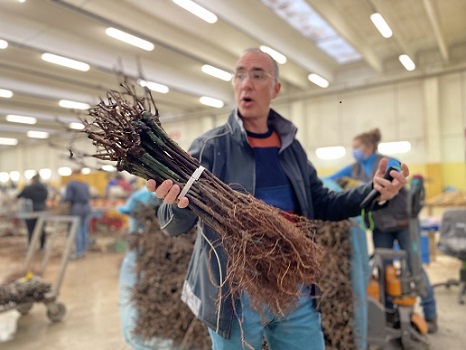
This worldwide power invests in research and experimentation, there is clearly no lack of hybridizations, as well as microvinifications. Note of merit for a machine for the creation of grafts called Celerina Plus, created with two noble purposes. To increase the surface in contact between the graft and the rootstock in order to facilitate those varieties which are difficult to graft, in fact it creates a "comb" graft which is different from the classic omega graft. Celerina Plus also has the ambitious goal of preventing the advent of fatal phytopathologies such as mal bait by spraying a specific disinfectant on the "wound" between the two pieces of wood (I reserve the right to write a new piece on "how a rootstock is born" in the future).
Having made the necessary introductions, let's proceed with what we know. The choice of rootstock is never random and is made according to a series of parameters that we can summarize and simplify in:
- adaptability to droughty soils
- tolerance of root asphyxia
- aptitude for mineral absorption
- ability to penetrate soil and rock or vice versa to distribute itself more or less horizontally
- compatibility between graft and rootstock
What actually happens under the ground is not completely known to us, however observation and experience have contributed to consolidate some certainties. The answer to the question whether roots have a taste and what it is comes to us again from experience. I was able to taste the same clone of Chardonnay (R8) cultivated in Franciacorta on different rootstocks and the result was shocking. Putting into account some variations given by microvinifications, what surprised me the most was to blindly identify the clone/graft combination currently most common in that area. "It tastes like Chardonnay from Franciacorta" were my exact words and indeed it was R8 on SO4, currently the most common one... but the real question is: if all the others were Chardonnay from Franciacorta, what have I been drinking until today? Chardonnay from Franciacorta or SO4 from Franciacorta? Probably the most correct answer is Chardonnay over SO4 from Franciacorta. Confirming that maybe we too often underestimate the role, and the taste, of roots and we should name them more often.
And as if this discovery was not enough, we can increase the dose. One wonders about the other rootstocks I sampled. Before introducing them, let's take a step back.
Still in terms of observation, we cannot fail to notice that the climate is changing and that (but we already knew this) it is not the same all over the world. So let's ask ourselves: why should a rootstock which is good in Germany, with a continental climate, be good also in Italy, where the climate is more and more Mediterranean? Isn't it perhaps the case to identify new ones specific not only for the variety they host or for the soil they inhabit, but for the vineyard as a real ecosystem?
These questions, which seem more and more to be needs, have been asked by the University of Milan which, with Rauscedo, has developed four new "intelligent" rootstocks. Made in Italy and named M1, M2, M3, M4, they respond well to the different needs of the plant according to the season (with a prevalence of humidity in autumn, and hot-dry climate in summer). Since the first experiments, they seem to be pretty performing and to adequately respond, without too many compromises, to the needs of Italian vineyards. They limit vigor by guaranteeing an adequate growth of the root system, they bring fruits to maturation, they resist to the presence of limestone and salinity.
At the tasting they did not disappoint, although for me it was not possible to recognize the area (and maybe this is not a bad thing at all). If I wanted to award one out of all, based on my experience, that prize goes to M4, which seemed to be the right compromise in terms of production performance, drinkability and varietal expression. Climate is changing, are we destined to see the taste of our wines changing as well? I do not have a certain answer but I can guess it. I conclude with a quotation heard during the last Assoenologi National Congress used by director Paolo Brogioni: "I am ready to go anywhere, as long as it is forward" cit. David Livingstone.
I believe this is the best spirit to face the present and the future.
It seems to me that I have written a lot but in reality, while I am counting the lines of this article, I realize that everything is still to be written. A sincere thanks goes to Dr. Ermanno Murari for his welcome and knowledge that he masters as well as he is willing to share. And to Tiziano Castagnedi, Tenuta Sant'Antonio, for organizing the visit and uncorking a magnum of Vecchie Vigne Soave doc 2011, in dazzling shape. A wine that is an authentic certainty in a world where everything, inevitably, changes.

 Italiano
Italiano

